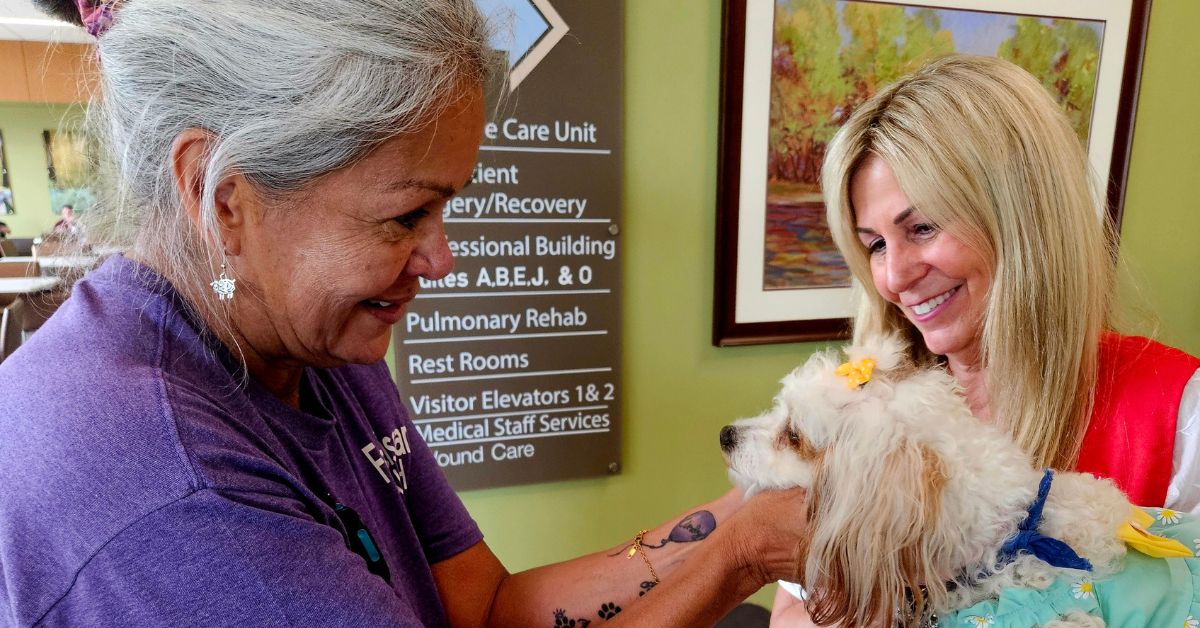Updates on ozone therapy in animals


How to evacuate with pets or service animals during a flight emergency
Learn how to safely evacuate with your pet or service animal during a flight emergency.
Last week, I attended and was a speaker at the AHVMA (American Holistic Veterinary Medical Association) conference in Florida.
One of the hottest topics and well-attended lecture tracks was on ozone therapy in veterinary medicine. Based on my experience performing thousands of successful ozone treatments, it isn’t surprising that many vets are seeking more information on how their patients can benefit from this natural option for disinfection and direct patient treatment for pain control, antimicrobial therapy, enhanced tissue healing and cancer suppression.
Learning about the many benefits in my clinics, my staff and I have had tremendous positive results with ozone treatments for many years.
Ozone therapy in veterinary practice: A rising star in animal healthcare
Ozone therapy, once a niche treatment in human medicine, is rapidly gaining favor in veterinary practice as a powerful tool for healing, pain management, cancer therapy and infection control.
This innovative approach leverages the unique properties of ozone (O₃) – a molecule composed of three oxygen atoms – to deliver therapeutic benefits across a wide spectrum of conditions in animals. As integrative and holistic veterinary medicine continues to evolve, ozone therapy is emerging as a safe, effective, and versatile modality that complements conventional treatments.
What is ozone therapy?
Ozone therapy involves the administration of medical-grade ozone gas, typically generated by passing pure oxygen through an ozone generator. The resulting ozone is highly reactive and, when introduced into the body, breaks down into oxygen (O₂) and a single reactive oxygen atom. This reactive oxygen interacts with biological tissues to produce secondary messengers such as ozonides and reactive oxygen species (ROS), which trigger a cascade of beneficial physiological responses.
Applications in veterinary medicine
Veterinarians are increasingly using ozone therapy to treat a wide range of conditions in dogs, cats, horses and exotic animals. Its applications include:
- Pain Management: Ozone has analgesic properties that help alleviate pain associated with arthritis, injuries and post-surgical recovery.
- Wound Healing: Ozonated water and oils are used to disinfect and accelerate the healing of wounds, ulcers and skin infections.
- Infection Control: Ozone’s broad-spectrum antimicrobial action effectively kills bacteria, viruses, and fungi –even antibiotic-resistant strains like MRSA.
- Inflammation and Cancer Cell Reduction: By modulating cytokine expression and enhancing antioxidant enzyme systems, ozone therapy helps reduce inflammation in chronic conditions.
- Immune Support: Ozone stimulates the immune system, making it a valuable adjunct in treating autoimmune disorders, allergies and cancer.
- Detoxification: It aids in liver and kidney function by promoting the elimination of toxins.
Methods of administration
Ozone therapy can be administered in several ways, with some listed here:
- Topical: Ozonated oils and water are applied directly to wounds or infected areas.
- Subcutaneous and Intramuscular Injections: Used for localized pain relief and inflammation. Ozone can be administered into tumors when mixed with a patient’s own blood or as an ozonated glycerin injection – this method is quite powerful in treating cancers.
- Ozone-Acupuncture: Combines acupuncture with ozone injections at specific points.
- Intravenous (IV) Therapy: Ozonated fluids or blood treated with ozone are reintroduced into the body.
- Oral: Ozonated water can be consumed to support systemic health.
- Ear Insufflation: Treatment for ear infections to restore ear health.
Mechanism of action
The therapeutic effects of ozone stem from its ability to induce controlled oxidative stress. This mild stress activates the body’s antioxidant defenses, improves oxygen metabolism, and enhances cellular energy production.
Ozone benefits
- Boosts ATP production.
- Increases 2,3-DPG in red blood cells, improving oxygen delivery to tissues.
- Promotes vasodilation and microcirculation, aiding tissue perfusion.
- Modulates immune responses by shifting cytokine profiles toward anti-inflammatory states.
Safety
Despite its reputation as a toxic gas when inhaled, ozone is remarkably safe when used correctly in medical settings. Trained veterinary professionals ensure that pure ozone gas is never inhaled and is administered in controlled doses tailored to the animal’s condition. Its selective action against harmful pathogens, while sparing beneficial bacteria, makes it a great alternative to antibiotics – especially in the face of rising antimicrobial resistance.
Additionally, for food animals, ozone therapy means safer meat, milk and eggs for human consumption – free from antibiotic residues.
Case studies and clinical success
Veterinarians in my practice and throughout the world who have adopted ozone therapy report impressive outcomes. From faster recovery times in post-operative patients to improved quality of life in pets with chronic illnesses, the anecdotal and clinical evidence continues to grow. Practices that integrate ozone therapy often find that it enhances client satisfaction and expands their treatment capabilities.
The future of ozone in veterinary care
As awareness grows and more research is conducted, ozone therapy is becoming a staple in veterinary medicine. Its ability to support healing, reduce reliance on antibiotics, and offer non-invasive treatment options aligns with the growing demand for holistic and integrative care. Organizations like AHVMA are actively promoting education and training in ozone therapy, ensuring its safe and effective use across practices.
Current research into the use of ozonated glycerin for cancer and other inflammatory conditions is showing great promise for improved quality and length of life.
Ozone therapy represents a shift towards more drug-free options for restoring health in veterinary care – one that blends science, innovation, and compassion. By harnessing the power of oxygen in its most reactive form, veterinarians are unlocking new possibilities for healing and wellness in the animal kingdom. Whether used as a standalone treatment or in conjunction with conventional medicine, ozone therapy is proving to be a breath of fresh oxygen for patients, large and small, in veterinary practice.
Dr. Cynthia Maro is a veterinarian at the Ellwood Animal Hospital in Ellwood City and the Chippewa Animal Hospital in Chippewa Township. She writes a biweekly column on pet care and health issues. If you have a topic you’d like to have addressed, email [email protected].
link







